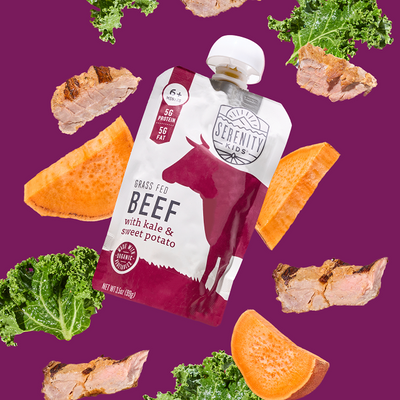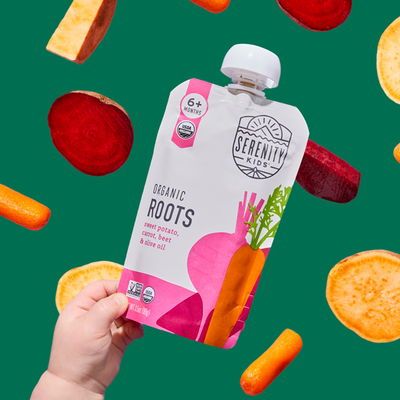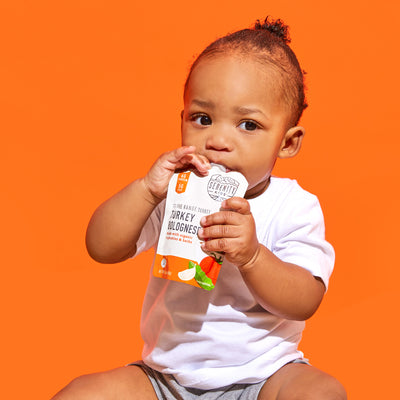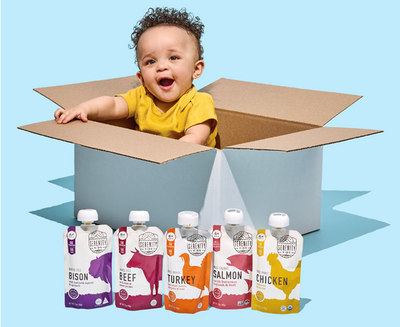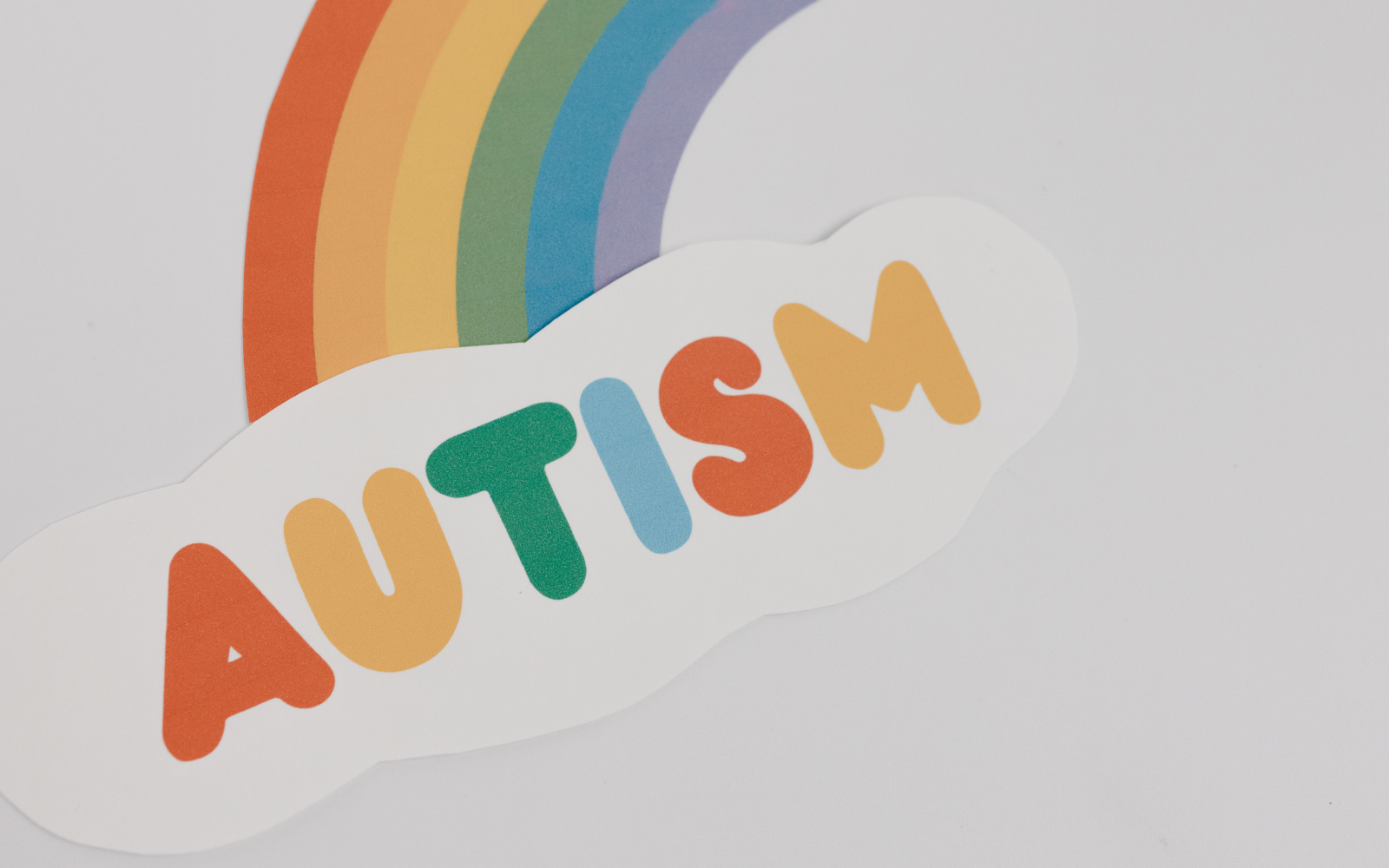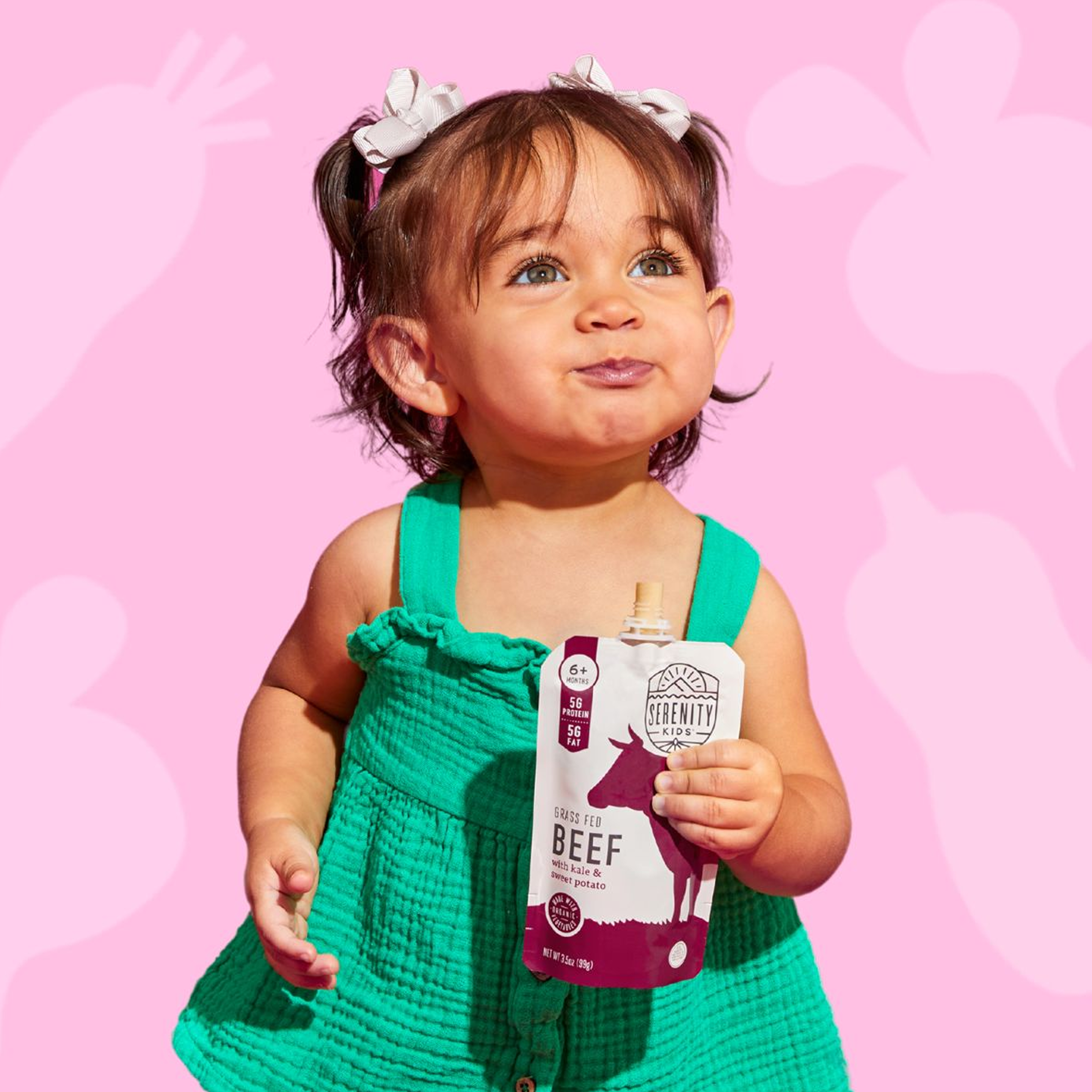It’s likely that you and your child will encounter many autistic children and adults throughout your lives. In fact, according to the Centers for Disease Control and Prevention (CDC), approximately 1 in 44 children has been identified with autism.
It can be valuable to know how to explain autism to your child, whether they are autistic or not. However, it can be difficult to know what to say—especially when you may still be learning or adapting to the information.
This article will help give a better understanding of autism and provide tips for parents who want to discuss autism with their kids. Additionally, Serenity Kids Co-Founder, Joe Carr, shares his experience as an autistic adult and gives advice on how to explain autism to kids.
Autism Explained
What is autism?
The autism spectrum is a range of neurological and developmental exceptionalities that are characterized by differences in how a person communicates and interacts with others and the world around them. It’s often accompanied by social, communication, and behavioral challenges, as well as special interests and talents.
Signs and attributes
Autism affects everyone differently; however, common signs and attributes include:
-
Not pointing to or looking at objects to show interest
-
Avoiding eye contact
-
Extreme interest in one subject area
-
Difficulty expressing their own needs or feelings and recognizing those of others
-
Delayed language skills or nonverbal
-
Trouble relating to or communicating with others
-
Uninhibited, less concerned about what others think about them
-
Repeating words or phrases
-
Very direct and exceptionally honest, saying exactly what they’re thinking
-
Trouble understanding or learning new skills
-
Very specific food preferences, only eating a few types of food, sensitive to texture
-
Repetitive behavior like rocking, spinning or waving hands
-
Can be disruptive or aggressive in social situations or around loud noises
Additionally, there are also strengths and gifts that are commonly seen in autistic people, including:
-
Having a good memory
-
Hyper creativity and ability to think outside the box
-
Learning certain information quickly
-
Being empathetic and understanding toward others
-
Having deep passions and interests
-
Being detail-oriented
-
Having a unique sense of wonder about the things around them
-
Being good at visual thinking and learning
“Autism has really given me that mix of challenges and gifts,” shares Carr. “There are disadvantages in certain areas, but super advantages in others.”
Causes of autism
The exact cause or origin of autism spectrum disorder has not been identified. Researchers believe that a combination of genetics and environmental factors may cause autism; however, it’s unknown whether these are actual causes or if they are simply factors that amplify the signs and characteristics commonly seen in autistic people.
Researchers have, however, determined several links to autism that may increase the likelihood of being autistic.
-
Close family history of autism
-
Premature babies (born before 26 weeks)
-
Certain medications during pregnancy
-
Sex - at current diagnosis rates, males at birth are four times more likely to receive an autism identification
Identification and support
Autism is usually identified earlier in life, although this isn’t always the case. There’s no lab test used to identify an autism diagnosis—healthcare professionals will instead observe the person’s behavior and discuss any signs that caregivers, or others close to the person, may be noticing.
A referral to a specialist may be given for the final identification. The specialist will also be able to provide you with additional information and direct you toward support groups.
Learning your child is autistic can feel scary and confusing, but try to view it as a blessing—now you can better understand and support their needs and access a huge community of support.
“When you find out your kid’s autistic, I always say ‘Congratulations,’” shares Carr. “Now you know a lot more about your kid and how to help them succeed.”
How does it feel to be autistic?
Everyone’s experience with autism is unique, just like the individual.
Autism can often feel isolating if you don’t understand why you or your child may behave or communicate differently than others. Learning you or your child is autistic can provide a deeper understanding of these differences and challenges, while also giving you the opportunity to embrace the amazing gifts and talents that autism has also given you or your child.
Carr recalls, “I didn’t know I was autistic until I was in college. As a child, I was in trouble all the time. I was bullied. I was excluded. I had a lot of difficulty in certain situations. But I didn't know I was autistic, so I just thought I was broken. I just thought there was something wrong with me.”
He continues, “That idea that something was wrong with me, but I didn’t know what created this awful shame complex. That was probably the most challenging part of being autistic—the shameful idea that I was wrong or broken.”
After learning he was autistic, he realized that all of his challenges were actually the flip side of all of his amazing gifts. “I have such incredible gifts that I wouldn't trade for anything, so I really was able to embrace autism,” says Carr.
How to explain autism to autistic kids
Explaining autism to an autistic child can be confusing and challenging. Start by choosing times when the child is relaxed and have a trusted adult there to help begin these conversations. Here are several other ideas to keep in mind when explaining autism to an autistic child.
Discuss autism early and often with compassion - not pity!
“I think people should talk to their child about autism early and often,” advises Carr. “As soon as they know, they should be talking about it. Talk about it all the time.”
Approach the topic with compassion, not pity. Acknowledge that autism may make certain tasks more difficult and be compassionate about these areas. But avoid sounding like they are a victim or in any way helpless.
Explain to them what gifts they have because of autism
While autism comes with challenges, it also comes with unique skills and talents. In fact, one 2015 study suggested that more than 70% of autistic children and adults had above average memory, visuo-spactial abilities, calculation skills, or were talented in drawing or music.
Pay attention to the areas that your child gravitates toward and where they seem to excel. Pointing out and attributing these skills and talents to their autism can help them learn to embrace and appreciate their autism.
Discuss the challenges they will face living with autism
It’s also important to discuss the challenges of being autistic. Help them understand that some things are just harder because they’re autistic. They aren’t broken. They aren't wrong. They’re just autistic. Many of the challenges are related to being autistic in a non-autistic world, so try to validate that the challenge is real without judging them or others.
“There’s the gifts that come with it, but there’s also some of these challenges,’” says Carr.
Avoid cultivating a victim mindset in yourself or them
Acknowledge and teach your children about the challenges that autism may bring, but avoid projecting a victim mentality. Instead, teach them to embrace the challenges and focus on the unique skills that autism has brought them.
“This starts with you as a parent,” says Carr. “Get out of this idea that autism is a curse. If you believe that in any way, your kid is going to feel as if they are a curse.”
Work on truly appreciating and celebrating your child’s differences so that they can see that attitude modeled
“Work to really truly appreciate autism,” says Carr. “If you have a subtle attitude that there’s something wrong with it, your child is going to feel that. You need to model for them that you genuinely believe that they’re different, special, and awesome.”
Join an autism support group for parents of autistic children
Autism support groups are a great way for autistic children and their families to find others that can understand and relate to their experiences. Many parents find that support groups are beneficial in learning how to manage and assist with the important challenges that often come with parenting an autistic child. It can also be a great way for autistic kids to meet neurodivergent or autistic peers.
Introduce them to autistic adults to share their experiences, in person or show them videos
This is a great way to help your child understand that they aren’t alone and that there are others that are “different like them”. This can also help children understand that autism doesn’t mean they are broken or damaged—there have been so many successful autistic people, both past and present, to help encourage your child that they really can do anything once they embrace their gifts and talents.
We love this talk by Dr. Temple Grandin, a prominent author and speaker on autism, where she explains the importance of the autistic mind and how the world needs all kinds of minds.
Avoid projecting shame at all costs - teach them to believe in themselves
“Avoid shame at all costs,” advises Carr. “Shame is the most damaging thing to any kid, but I think especially to autistic kids who get that message all the time. It’s very important to avoid shame, so always focus on encouragement and support.”
Teach them to believe in themself and help them understand that they really can overcome the challenges and do anything they set their mind to.
Teach them to self-advocate with teachers, friends, and others
You won’t always be around to communicate your child’s needs and interests, so teaching them to self-advocate with teachers, friends, classmates, and others will help ensure they’re able to express themselves and their desires. Self-advocacy is an important skill that they will use throughout their entire life. It requires they be able to quickly and comfortably tell people they are autistic and ask for the specific accommodation they need.
How to explain autism to non-autistic kids
Explaining child autism to neurotypical kids can be difficult, as the behaviors and reactions of autistic people are sometimes hard to predict and understand. Nevertheless, it’s important to communicate to non-autistic kids what autism is and help them appreciate neurodiversity. Here are several tips to help simplify the conversation.
Research about autism first
To properly explain autism to a non-autistic child, it’s important to first do some research on the topic to ensure you’re providing the correct information. This will help you better understand autism, so you can lead a productive conversation. Research will also help prepare you for any question your child asks about autism.
There are many books that specialize in autism, and how to explain autism to children. There are also numerous online resources available, including Asperger/Autism Network (AANE) and Autistic Self Advocacy Network (ASAN).
Explain autism according to the developmental age of your child
Keep in mind the developmental age of your child when explaining autism, or another similar topic. Help them understand by viewing it from a child’s point of view and explaining it to them in a way that they can understand.
For example, explaining autism to a toddler will look differently than explaining it to a six-year-old. Fortunately, there are a variety of age-appropriate books and resources available to help educate your child on autism.
Talk simply about autism, both challenges and gifts
Autism can be complex and confusing, so focus on explaining it to kids in a way that they’ll actually understand. Skip the medical jargon and focus on simplifying it to their understanding level. Remember to explain that autism may come with certain challenges, but that it also comes with unique talents and gifts.
Explain the autistic behavior without judgment
“Every kid is a little different, and some have a very specific kind of difference, called autism,” shares Carr.
Help educate your child on some of the behaviors that are common in autistic children and give them tips on how to interact.
Autistic children “might want to play alone, but just because they’re playing alone doesn’t mean they want to play alone. They might just want to play a very specific game. To play with them, you may want to let them lead—engage in the games or activities that they really like,” says Carr. “If they want to play your game and change it a little bit, let them change it. You might find that the game’s even more fun.”
Highlight the talents and positive values of autistic children
“Explain that autism comes with special gifts, as well as special challenges,” says Carr. “Autism is not something that’s bad or wrong. It's just something that's different. Autistic kids have some very special talents and gifts that are the flipside of their challenges.”
This can help make autism seem a little less scary or different to kids who don’t quite understand.
Foster an environment where your child feels comfortable having conversations, and always answer questions
Learning how to discuss and explain autism is an ongoing experience. You don’t need to have all of the answers. Focus on starting the conversation and fostering an environment where your child feels comfortable asking honest questions and having conversations about autism. Answer questions honestly, and if you don’t know the answer—that’s okay—just explain to them that you will find out and get back to them with the answer.
Use positive metaphors, analogies, and stories to explain autism
Engage your child in exciting conversations about autism using positive metaphors, analogies, and stories to explain the common differences between autistic people. Draw attention to the special talents and abilities of their autistic friend, along with the challenges they may face.
Communicate your family values toward autistic children: inclusivity, compassion, and love
Teach your kids how to interact with autistic children with a sense of empathy, inclusivity, compassion, and love. Not only is it important to communicate this, but it’s also important to lead by example.
“Most importantly, you have to model it,” says Carr. “Kids do as we do. If you’re actively connecting with people with diverse backgrounds in your life, other adults or children, you can show that. Talk to your kid about how it’s benefited you from being friends with people who are a little different.”
More than anything, teach kids to honor how we’re all different, and to be kind and treat others with the respect that they would want to be treated with.
Written by Jennifer Wirth. Jennifer is a professional health writer, leveraging her scientific background as a Chemical Engineer to uncover the most interesting aspects of infant nutrition, pregnancy, and parenting. As a wife and mother of three young children, Jennifer is passionate about providing the best possible nutrition for her family. She believes that developing healthy eating habits early helps build the foundation for a long, fulfilling life.




